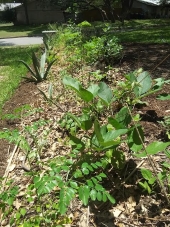posted 10 years ago
Question about cover cropping:
I am trying to start a little orchard: I have approximately 1 acres of heirloom trees. I just dug holes to plant and nursed with a fungal root dip, organic phosphate and nutrients and peastone mulch on top. I now want to plant strips of buckwheat between the trees (trees are planted perpendicular to south facing slope). I have 2 broadforks and 3 people. The problem I am now finding is that while the broadfork does a great job with loosening compaction, there is still a ton of thick grass between the holes the broadfork made. I have 270 trees so I don't have enough material or time to sheet mulch, and I am planting the buckwheat late anyway, I plan to cut it down once it flowers. If I try to turn the sod over, I expose tree roots and it is extremely lumpy, also supremely difficult to do. Can I just drop buckwheat seeds into the holes created by the broadfork and water them, could I use a garden weasle to break up the grass, or is there something else you recommend? There is about 10' between each tree, I have 25 lbs of buckwheat and 3 people. I would appreciate some help! Thanks,
Jonathan





